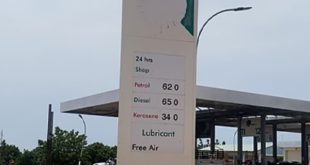 Oil trimmed its weekly gain after the biggest U.S. stockpile slump in 17 years was seen as a one-off caused by a tropical storm that disrupted imports and offshore production.
Oil trimmed its weekly gain after the biggest U.S. stockpile slump in 17 years was seen as a one-off caused by a tropical storm that disrupted imports and offshore production.
Futures dropped 2.1 percent in New York, paring the weekly advance to 4.9 percent. Crude inventories fell 14.5 million barrels last week, the biggest decline since January 1999, according to Energy Information Administration data Thursday. Imports tumbled 21 percent as Tropical Storm Hermine moved into the Gulf of Mexico on Aug. 28, disrupting shipping and output.

Oil has swung amid speculation members of the Organization of Petroleum Exporting Countries and Russia would agree on measures to stabilize the market. While Saudi Arabia’s Energy Minister Khalid Al-Falih said Monday he’s optimistic producers will cooperate, a meeting with his Russian counterpart ended without any detailed plan and Iran continues to keep investors guessing on whether it will join a potential freeze accord. Crude inventories in the U.S. remain near the highest seasonal level in more than 30 years despite the drop in stockpiles.
“The big story this week was the very large draw on U.S. oil inventories mainly due to temporary disruptions on the back of a storm,” said Jens Naervig Pedersen, an analyst at Copenhagen-based Danske Bank A/S. “But it looks to be a one-off event and market reaction may be temporary.”

U.S. Supplies

West Texas Intermediate for October delivery fell $1 to $46.62 a barrel on the New York Mercantile Exchange at 9:05 a.m. Central time. The contract jumped $2.12, or 4.7 percent, to $47.62 a barrel on Thursday, the biggest gain since April 8. Total volume traded was 15 percent above the 100-day average.
Brent for November settlement slipped $1.12 cents, or 2.2 percent, to $48.87 a barrel on the London-based ICE Futures Europe exchange. Prices climbed 4.2 percent to $49.99 a barrel on Thursday. The global benchmark crude traded at a $1.63 premium to WTI for November delivery.
U.S. crude supplies declined to 511.4 million barrels in the week ended Sept. 2, according to EIA data. Inventories reached 543.4 million barrels in the week ended April 29, the highest since 1929. The stockpiles remain at their highest seasonal level since at least 1982. A 905,000-barrel gain was projected by analysts surveyed by Bloomberg before the release.
Crude imports dropped to 7.07 million barrels a day last week, the biggest decline since September 2012, EIA said. Refineries increased operating rates by 0.9 percentage points to 93.7 percent of capacity, the highest since November 2015. Plants usually begin to cut back on operations in August as the peak-demand driving season comes to an end.
Al-Falih and Algerian Energy Minister Noureddine Bouterfa will meet with OPEC Secretary General Mohammed Barkindo in Paris on Friday, Bouterfa said. A recovery in the oil markets in under way and there is consensus it won’t take too long, Barkindo said in Paris.
Though major oil producers continue to lay the ground for a potential deal to bolster crude prices some analysts are skeptical an agreement will be reached. Nigeria, Libya and Iran all hope to resume lost production after their output was severely constrained in recent years. They have the right to raise output, Bouterfa said in Moscow.
“Iran, Libya, Nigeria and potentially Iraq remain the stumbling blocks for a deal,” Giovanni Staunovo, an analyst at UBS Group AG in Zurich, said by e-mail. “They all want their exemptions, and discussions will have to involve them.”
 MMS PLUS NG – Maritime, Aviation, Business, Oil and Gas News Online Newspaper with coverage in Maritime, Oil and Gas, Aviation, Power and Energy as well as Financial News
MMS PLUS NG – Maritime, Aviation, Business, Oil and Gas News Online Newspaper with coverage in Maritime, Oil and Gas, Aviation, Power and Energy as well as Financial News









